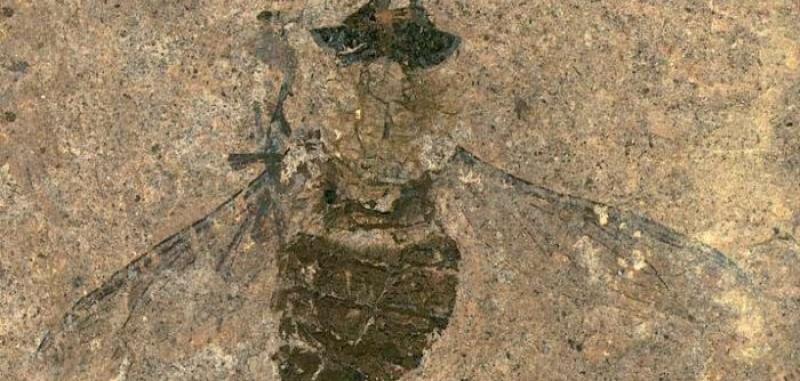Full-bellied fossil suggests flies were active pollinators 47 million years ago - UPI.com
By: UPI



March 11 (UPI) -- An ancient insect fossil, recently unearthed in Germany, suggests flies were actively pollinating a diversity of plants some 49 million years ago.
Analysis of the fossil, published this week in the journal Current Biology, suggests the fly gorged itself on plant food prior to its demise. Scientists used pollen remains found in the fly's stretched stomach to reconstruct the ancient environment's plant diversity.
The novel fly species, Hirmoneura messelense, was discovered among layers of ancient lake sediments at the Messel Pit, a fossil-rich Eocene deposit that was named a UNESCO World Heritage Site in 1995.
Most investigations of pollination services focus on bees and butterflies, but other insects, including flies, help pollinate, too. The latest findings suggest flies had evolved to become dynamic pollinators by the Early Eocene Epoch.
"The rich pollen content we discovered in the fly's stomach suggests that flies were already feeding and transporting pollen 47 million years ago and shows it played an important role in the pollen dispersal of several plant taxa," study co-author Fridgeir Grimsson said in a press release.
"Flies were major pollinators in ancient tropical [and subtropical] equivalent ecosystems and might even have outshined the bees," said Grimsson, a botanist at the University of Vienna.
Pollen grains extracted by the researchers revealed an abundance of waterwillow and virgin ivy species -- members of the plant genera Decodon and Parthenocissus, respectively.
Today, waterwillow, sometimes called swamp loosestrife, is a clump-forming, shrubby plant found among the wetlands of the United States and Canada, suggesting the full-bellied fly lived among open, low-canopy vegetation.
"It is likely that the fly avoided long-distance flights between food sources and sought pollen from closely associated plants," Grimsson said.

 Article is LOCKED by moderator [Split Personality]
Article is LOCKED by moderator [Split Personality]






and yet today, only honey bees get respect and protection
While flies pretty much have an unclean, shit eating reputation.
47 million years will do that I guess.
guilt thru association.
fossilized 47-million-year-old fly is found with a full stomach (msn.com)
Imagine how bizarre a fly's life is.
eggs
larvae/maggots
pupae
adult
the process can take a few days or a few weeks depending on temperature
the average adult fly has 8 to 25 days to annoy us
find a mate and die.
47 million years....the wings are fascinating.. pulled a few off in my youth, lol.
I will never ever cuss a fly again.